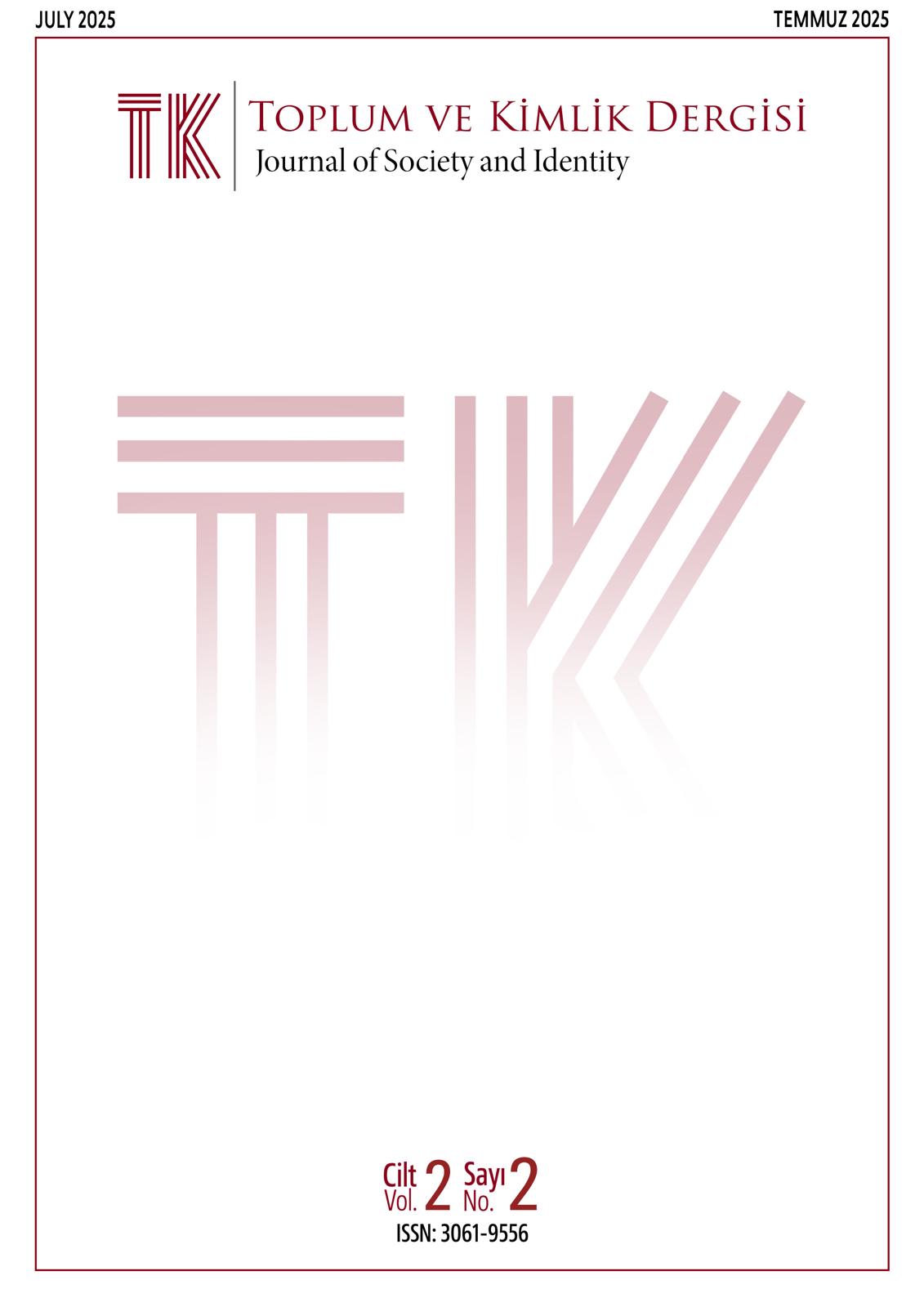Persistent Stalking as a Type of Violence
DOI:
https://doi.org/10.5281/zenodo.16619828Abstract
This study aims to examine how individuals residing in Istanbul perceive and experience the phenomenon of stalking. This research, prepared as a part of the author’s ongoing doctoral dissertation, is based on data related to stalking. The study, designed using a qualitative method, is based on in-depth interviews conducted with 54 participants selected from six socio-economically diverse districts of Istanbul (Şişli, Fatih, Gaziosmanpaşa, Kadıköy, Üsküdar, Sultanbeyli). The findings reveal that stalking is a more prevalent and insidious form of violence than is commonly perceived and affects individuals regardless of gender. The data, analyzed through thematic analysis and discourse analysis, indicate that this behavior is not limited to romantic relationships; it also manifests through non-consensual acts in public spaces, undermining individuals' sense of security. The participants' narratives illustrate that particularly women are exposed to severe psychological effects such as fear, anxiety, and social isolation, leading to a decline in their quality of life. The study discusses the underlying dynamics of stalking through theoretical frameworks such as social learning theory, relational goal pursuit theory, and adult attachment theory. The findings indicate a strong relationship between this behavior and gender roles and power dynamics, highlighting that stalking is not sufficiently recognized in Turkiye. Furthermore, it is observed that digitalization has led to the emergence of new forms of stalking that involve anonymity. By systematically analyzing the heterogeneous nature of stalking experiences in Istanbul, the study provides data for the local literature and contributes to the examination of the less visible forms of violence.
Keywords: Stalking, violence, harassment, gender roles.
References
Bacon-Shone, J., & Laidler, K. J. (2022). Stalking – Intimate Partner Violence and Debt Collection Problems in Hong Kong. Hong Kong: The University of Hong Kong.
Çalışır, M. (2009). Yetişkin bağlanma kuramı ve duygulanım düzenleme stratejilerinin depresyonla ilişkisi. Psikiyatride Güncel Yaklaşımlar-Current Approaches in Psychiatry, 1(3), 240-255. https://www.cappsy.org/archives/vol1/
Davis, K. E., Swan, S. C., & Gambone, L. J. (2010). Why doesn’t he just leave me alone? Persistent pursuit: A critical review of theories and evidence. Sex Roles, 66(5-6), 328-339. https://doi.org/10.1007/s11199-010-9882-3
Doğan, R. (2014). “Kadına Yönelik Şiddetin Bir Türü Olarak Israrlı Takip (Stalking) Kavramı ve Suçu”. Ankara Barosu Dergisi. (2), 135-154.
Finch, E. (2002). Stalking: A violent crime or a crime of violence? The Howard Journal, 41(5), 422-433. https://doi.org/10.1111/1468-2311.00256
Gomes, M., Ferreira, C., Silva, S., Figueiredo, P., Ramião, E., & Barroso, R. (2024). Stalking perpetration in adolescents in the context of intimate partner violence. Victims & Offenders. https://doi.org/10.1080/15564886.2024.2347641
Guest, G., Bunce, A., & Johnson, L. (2006). How many interviews are enough? An experiment with data saturation and variability. Field Methods, 18(1), 59-82. https://doi.org/10.1177/1525822X05279903
Meloy, J. R., & Mohandie, K. (2013). Stalking. In J. R. Meloy (Ed.), Wiley Encyclopedia of Forensic Science. 1-4 John Wiley & Sons Ltd.
Meloy, J. R., Mohandie, K., & Green, M. (2011). The female stalker. Behavioral Sciences and the Law, 29(2), 240-254. https://doi.org/10.1002/bsl.976
Ngo, F. T. (2016). Stalking. In W. G. Jennings (Ed.), The Encyclopedia of Crime and Punishment (1st ed., pp. 1-5). Wiley. DOI: 10.1002/9781118519639.wbecpx081
Parkhill, A. J., Nixon, M., & McEwan, T. E. (2022). A critical analysis of stalking theory and implications for research and practice. Behavioral Sciences & the Law, 40(5), 562–583. https://doi.org/10.1002/bsl.2598
Saunders, B., Sim, J., Kingstone, T., Baker, S., Waterfield, J., Bartlam, B., Burroughs, H., & Jinks, C. (2017). Saturation in qualitative research: Exploring its conceptualization and operationalization. Qualitative and Quantitative, 52(4), 1893–1907. https://doi.org/10.1007/s11135-017-0574-8
SEGE (2022). İlçelerin Sosyo-Ekonomik Gelişmişlik Sıralaması Araştırması. Erişim: 05 Temmuz 2024, https://www.sanayi.gov.tr/assets/pdf/birimler/2022-ilce-sege.pdf
Tjaden, P. G. (2014). Stalking and cyberstalking. In J. S. Albanese (Ed.), The Encyclopedia of Criminology and Criminal Justice. 1-6. John Wiley & Sons, from https://doi.org/10.1002/9781118517383.wbccj5446
Downloads
Published
How to Cite
Issue
Section
License
Copyright (c) 2025 Emine Yılmaz

This work is licensed under a Creative Commons Attribution 4.0 International License.







